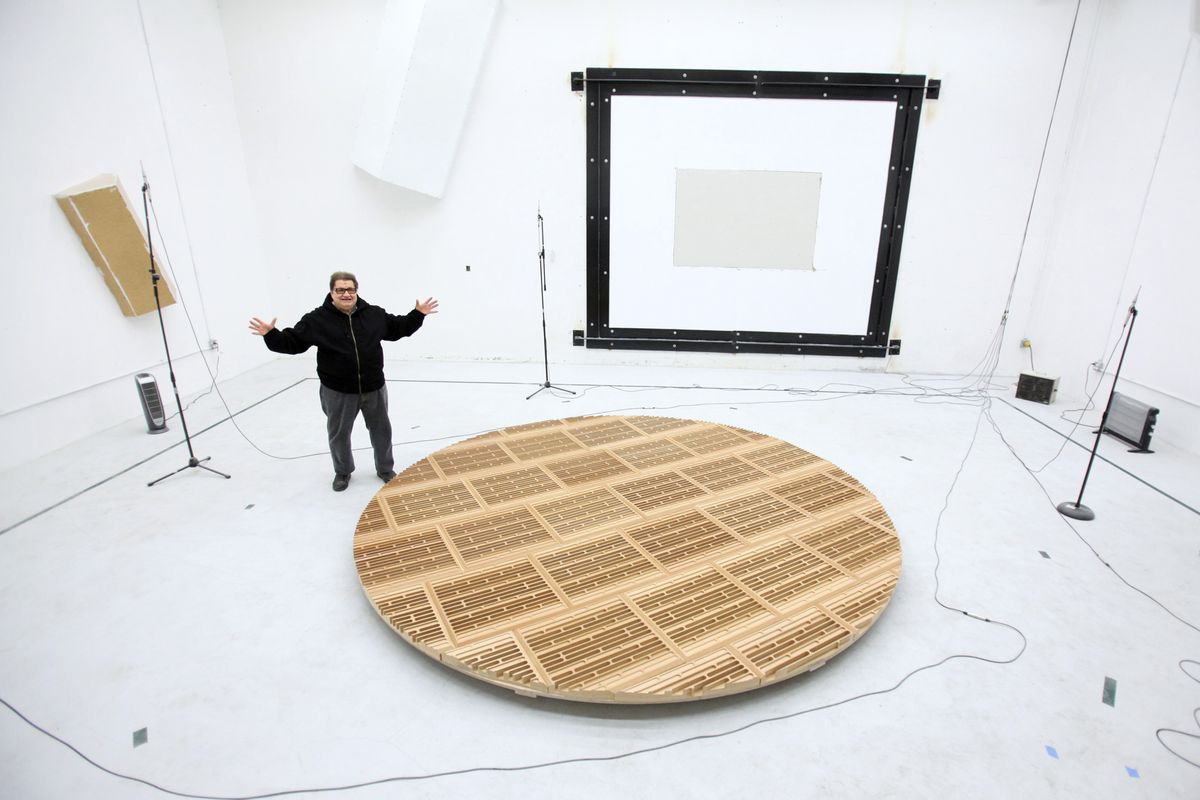Never-used reactor given new purpose
Entrepreneur turns Satsop facility into state-of-the-art sound lab

SATSOP, Wash. – Work ground to a halt on the Satsop nuclear reactor building more than 25 years ago before it ever produced a kilowatt of electricity.
The $440 million concrete behemoth, designed to withstand a massive earthquake and a direct hit from a jet airliner, sat empty for years, a lasting legacy to the failed nuclear plant construction program of the Washington Public Power Supply System on Fuller Hill near Elma.
Then along came Ron Sauro, an energetic scientist and entrepreneur who sees opportunity and jobs where others see gloomy concrete rooms and lost dreams of energy too cheap to meter.
Deep in the bowels of the 400,000-square-foot reactor building, Sauro has built a world-class acoustical laboratory to test how a variety of building materials and speakers absorb and transmit sound.
It took some precise carpentry and sophisticated electronics to shape the lab. But the reactor building was ideal for the retrofit job with its 10-foot-thick concrete foundation floating on a bed of gravel and its five-foot-thick walls.
“What we wanted was stability from all outside elements, including temperature, humidity and noise,” he said. “This is a one-of-a-kind place.”
The prototype laboratory Sauro opened this year includes two reverberation chambers that are the largest of their kind in the world, he said. One of them used to be the control room for the nuclear reactor that never was loaded with fuel.
“The bigger the room, the lower the sound frequency we can test,” he said.
He recently signed a four-year lease with the Grays Harbor Public Development Authority, moving his business, NWAA Labs, from Santa Clarita, Calif., to the Satsop Development Park. The park is the 1,700-acre business and technology park that once was the home to two of the five nuclear power projects WPPSS, a consortium of public utilities, attempted to build.
Sauro has begun testing for clients and received his first paycheck this month. The first customer was Perdue Acoustics, of Amarillo, Texas, which manufactures wall and ceiling panels to absorb and diffuse sound.
Sauro likes to patrol the gigantic nuclear power plant complex, including the reactor building, which is 16 stories, and one of the two cooling towers, which is the height of the Space Needle and encloses more than three acres. His plans for the structures, none of which has secured financing, include:
• Move the Boeing Co. jet engine tests from the Mojave Desert in California to inside the Project 3 cooling tower.
• Turn the concrete building that houses a storage tank for nuclear reactor makeup water into an “anechoic” chamber, which is the opposite of the reverberation room in his acoustic lab. “It would be the quietest room in the world,” he said. “You’d be able to hear your heart beating and the blood rushing through your ears when you went into that room.”
• Use the honeycomb of underground reactor rooms to test products for their ability to withstand heat, impact and wind.
• Convert the huge stainless steel pools built to store spent nuclear fuel rods in water into testing sites for unmanned, underwater vehicles.
“I can envision putting 70 to 80 percent of the reactor building to use in the next five or six years,” he said. “There’s a facility here with lots of potential, but it takes money.”